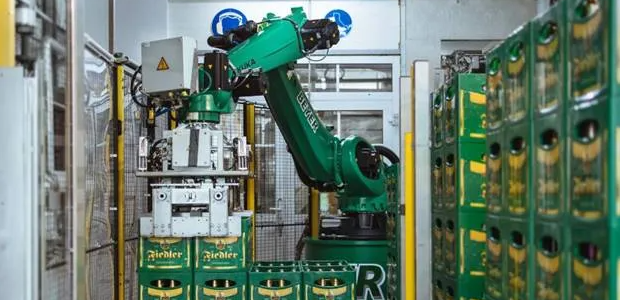
Robots for SMEs: Automation to combat shortage of skilled workers
"It is becoming more difficult to find employees, especially for physically demanding and at the same time monotonous tasks. The turnover of skilled workers is particularly high in these types of tasks," says Gerhard Müller, responsible for the regions Germany, Austria and Switzerland within KUKA's robotics division.
The Augsburg-based automation professional is therefore increasingly targeting small and medium-sized companies with tailored products and solutions, but has observed a long period of reticence: "Many entrepreneurs have so far shied away from the use of robots. Automation is too complex, too expensive and there is too much scepticism in the team," Müller continues.
However, this picture is currently changing. More and more small companies are recognising the opportunities that lie in the automation of tasks. For example, a galvanising plant with 65 employees from the Black Forest was able to reduce reservations within its own ranks by purchasing a compact robotic welding cell, save long transport distances and even win new customers. Similar examples can be found at the family-owned company STELA, which was able to increase its productivity, or at the small Fiedler brewery in the Erz Mountains, where a KUKA robot stacks the heavy beer crates.
A KR QUANTEC PA takes over the palletisation of heavy beer, thus providing relief to employees.
Countering the shortage of skilled workers and attracting talent
"In times of a shortage of skilled workers, the concern of employees about being replaced by a robot in production, which used to be so prevalent, is hardly an issue anymore. We also get feedback from customers that many are happy to hand over tasks that strain their backs, wrists or nerves," reports Müller. Robots are already in use today for palletizing, loading and unloading machines, quality control or welding - even and increasingly outside the already highly automated automotive industry.
"Such a robot is then quickly picked up and can complement well-established teams very well. Many users even give our robots names," says Müller. Many customers would also give KUKA as feedback that they were able to assign more interesting tasks to their employees after automation. Another effect is also: A company that uses robots is more attractive to new applicants. Finally, the management shows that it is positioning itself for the future and is investing in new technologies and thus in innovation.
This is how quickly the use of a robot pays off: a calculation example
A typical solution, in which a KUKA robot does the welding, costs around €110,000. Included in the price: a project-specific fixture for welding, the welding technology from a premium manufacturer, programming of the robot, as well as commissioning on site at the end customer's premises and training of its employees. The cost for an em-ployee who would otherwise take on this task is around €40,000 per year. Since the automation runs in two shifts, personnel costs of €80,000 must be expected. ROI (return on investment) calculators commonly used in the industry then show the result: after around 17 months, the investment in a robotic solution has paid for itself.

